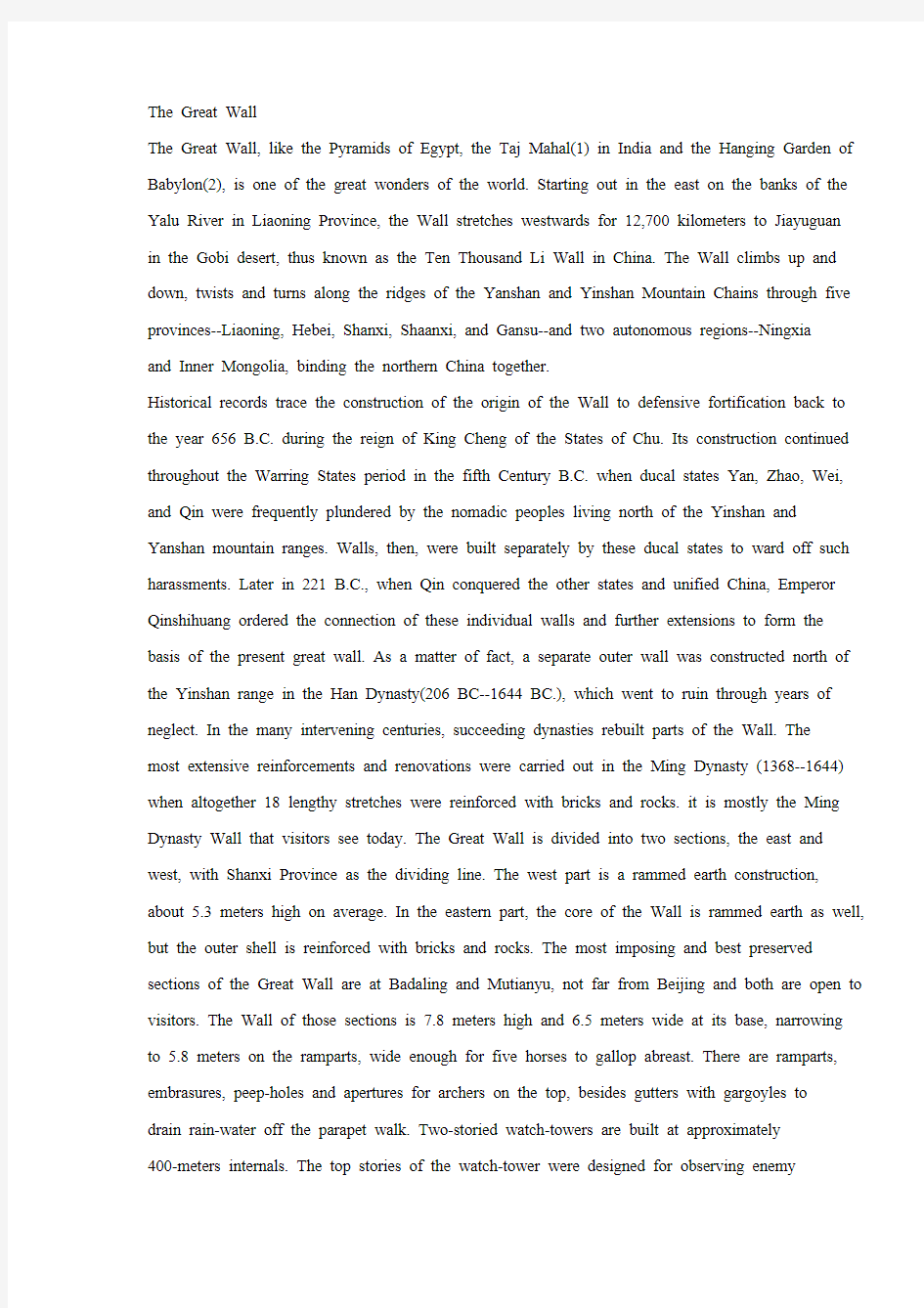
北京各大景点英文导游词
- 格式:pdf
- 大小:230.84 KB
- 文档页数:34


The Great Wall
The Great Wall, like the Pyramids of Egypt, the Taj Mahal(1) in India and the Hanging Garden of Babylon(2), is one of the great wonders of the world. Starting out in the east on the banks of the Yalu River in Liaoning Province, the Wall stretches westwards for 12,700 kilometers to Jiayuguan in the Gobi desert, thus known as the Ten Thousand Li Wall in China. The Wall climbs up and down, twists and turns along the ridges of the Yanshan and Yinshan Mountain Chains through five provinces--Liaoning, Hebei, Shanxi, Shaanxi, and Gansu--and two autonomous regions--Ningxia and Inner Mongolia, binding the northern China together.
Historical records trace the construction of the origin of the Wall to defensive fortification back to the year 656 B.C. during the reign of King Cheng of the States of Chu. Its construction continued throughout the Warring States period in the fifth Century B.C. when ducal states Yan, Zhao, Wei, and Qin were frequently plundered by the nomadic peoples living north of the Yinshan and Yanshan mountain ranges. Walls, then, were built separately by these ducal states to ward off such harassments. Later in 221 B.C., when Qin conquered the other states and unified China, Emperor Qinshihuang ordered the connection of these individual walls and further extensions to form the basis of the present great wall. As a matter of fact, a separate outer wall was constructed north of the Yinshan range in the Han Dynasty(206 BC--1644 BC.), which went to ruin through years of neglect. In the many intervening centuries, succeeding dynasties rebuilt parts of the Wall. The most extensive reinforcements and renovations were carried out in the Ming Dynasty (1368--1644) when altogether 18 lengthy stretches were reinforced with bricks and rocks. it is mostly the Ming Dynasty Wall that visitors see today. The Great Wall is divided into two sections, the east and west, with Shanxi Province as the dividing line. The west part is a rammed earth construction, about 5.3 meters high on average. In the eastern part, the core of the Wall is rammed earth as well, but the outer shell is reinforced with bricks and rocks. The most imposing and best preserved sections of the Great Wall are at Badaling and Mutianyu, not far from Beijing and both are open to visitors. The Wall of those sections is 7.8 meters high and 6.5 meters wide at its base, narrowing
to 5.8 meters on the ramparts, wide enough for five horses to gallop abreast. There are ramparts, embrasures, peep-holes and apertures for archers on the top, besides gutters with gargoyles to drain rain-water off the parapet walk. Two-storied watch-towers are built at approximately
400-meters internals. The top stories of the watch-tower were designed for observing enemy